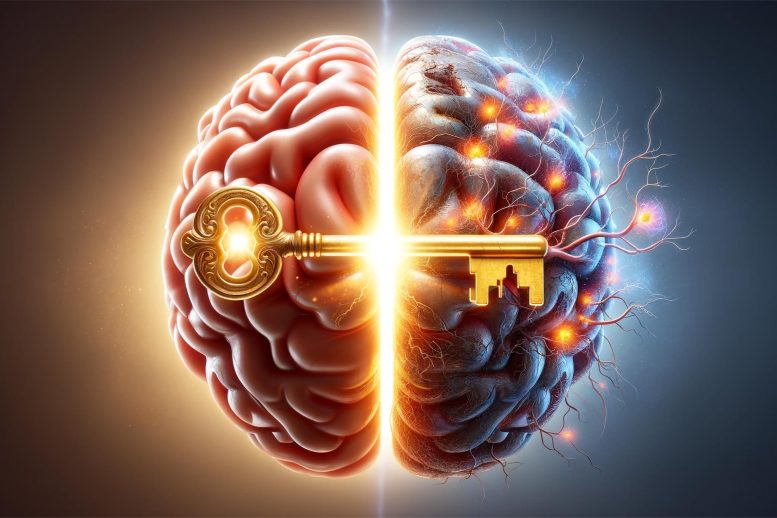
New research reveals that blocking the cGAS/STING pathway reduces age-related inflammation and cognitive decline, suggesting a potential therapeutic target for neurodegenerative diseases. Credit: SciTechDaily.com
Inhibiting the STING protein in aged mice leads to decreased inflammation and improved memory and physical function, highlighting a promising approach to mitigating aging-related challenges.
As we age, our bodies undergo various changes that can impact our overall health and make us more susceptible to diseases. One common factor in the aging process is low-grade inflammation, which contributes to age-related decline and impairment. However, the precise pathways responsible for this inflammation and their impact on natural aging have remained elusive until now.
The Role of cGAS/STING in Aging
A new study led by Andrea Ablasser at EPFL now shows that a molecular signaling pathway called cGAS/STING, plays a critical role in driving chronic inflammation and functional decline during aging. By blocking the STING protein, the researchers were able to suppress inflammatory responses in senescent cells and tissues, leading to improvements in tissue function.
cGAS/STING is a molecular signaling pathway that detects the presence of DNA in cells. It involves two proteins, cyclic GMP–AMP synthase (cGAS) and Stimulator of Interferon Genes (STING). When activated, cGAS/STING triggers an immune response to defend against viral and bacterial infections.
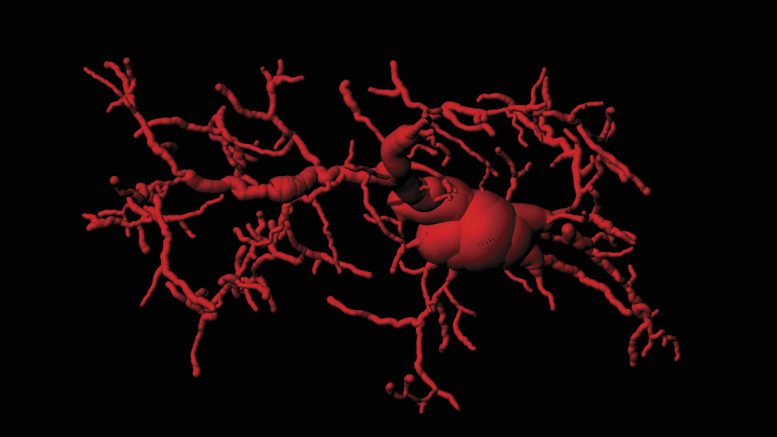
An activated microglial cell in the brain of cGAS/STING activated mice. Credit: Gulen et al. Nature 2 August 2023. DOI: 10.1038/s41586-023-06373-1
Link Between cGAS/STING and Cellular Senescence
Previous work by Ablasser and her colleagues has linked cGAS/STING to a number of biological processes, including cellular senescence, a hallmark of aging. Based on this, the researchers investigated whether it might underlie maladapted immune responses during aging.
The research found that activating the STING protein triggers specific patterns of gene activity in microglia, the brain’s first line of defense immune cells. These gene-activation patterns matched those arising in microglia in distinct neurodegenerative conditions, such as Alzheimer`s disease and aging.
“In search for a mechanism that would engage the cGAS-STING pathway in aging, we considered aberrant mitochondrial DNA species,” says Ablasser. “Mitochondria, the organelles that are responsible for energy production are well-known for disturbed functioning in aging and disease. Indeed, in microglia from old, but not young mice, DNA from mitochondria accumulated in the cell cytoplasm, suggesting a possible mechanism by which the cGAS-STING pathway contributes to inflammation in the aging brain.”
Impact of Blocking STING on Aging
The researchers studied the effects of blocking the STING protein in aged mice. As expected by its central role in driving inflammation, inhibiting STING alleviated markers of inflammation both in the periphery and in the brain. More importantly, animals receiving STING inhibitors displayed significant enhancements in spatial and associative memory. STING blockade also affected physical function with improved muscle strength and endurance.
The study advances our understanding of aging-related inflammation and also offers potential strategies for slowing cognitive deterioration in age-associated neurodegenerative conditions. The precise elucidation of the neuroimmune crosstalk governing microglial-dependent neurotoxicity also holds promise for the future study of neurodegenerative diseases.
Reference: “cGAS–STING drives ageing-related inflammation and neurodegeneration” by Muhammet F. Gulen, Natasha Samson, Alexander Keller, Marius Schwabenland, Chong Liu, Selene Glück, Vivek V. Thacker, Lucie Favre, Bastien Mangeat, Lona J. Kroese, Paul Krimpenfort, Marco Prinz and Andrea Ablasser, 2 August 2023, Nature.
DOI: 10.1038/s41586-023-06373-1
Funding: Schweizerischer Nationalfonds zur Förderung der Wissenschaftlichen Forschung, Horizon 2020 Framework Programme, Dr. Josef Steiner Krebsstiftung, Krebsliga Schweiz


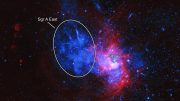
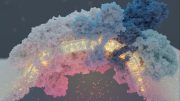


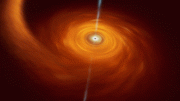
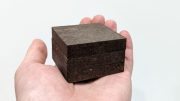

The entire world, meaning our known glaxy to human hight in our ahievements.Is the physical interpretation of Genesis 1:1-28. Iam the dreamer of my God in Christ Jesus and I desire to understand God’s words in creations and its creations process to material formations.In which would your Research aid humanity in time and space.
Never mind. Just tell us the meaning of “EPFL,” since the author didn’t.